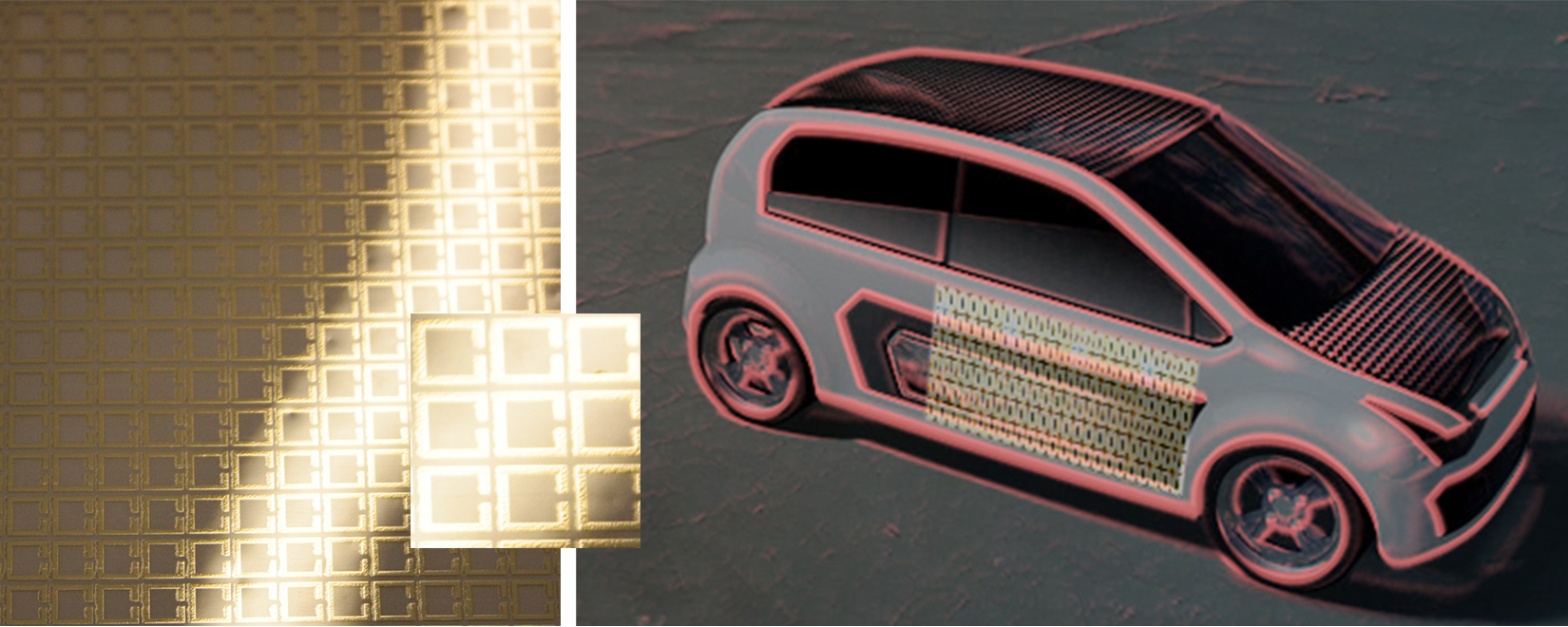Metamaterials – possibilities for the realization of passive-acting smart structures

Monitoring the condition of lightweight structures or rubbery-elastic composite materials is still a challenge due to the interface problem. It can lead to complex failure modes, such as delamination, when different material boundaries come into contact due to the intrinsic material properties of the involved materials, thus leading to a loss of stability and reliability of the composite material. For this reason, within the framework of the Federal Cluster of Excellence MERGE, the application and integration of metamaterials in composite materials is investigated in order to produce materials with sensory properties that allow condition monitoring to be determined contactless and in a passive fashion.
The approach of realizing sensor-based metamaterials is based on the integration of electromagnetic sub-wavelength resonators into composite materials. The resonators are applied as a two-dimensional array on substrate using printing or embroidery technologies. The size, alignment and arrangement of the individual resonators allow a specific reflection, transmission and adsorption behavior of electromagnetic waves in the microwave regime, which subsequently change by material changes, such as moisture penetration, or by the interaction between further integrated resonator arrays due to deformation or delamination processes. This is used to realize the sensor function to detect material changes or changes in the structural integrity of the composite material. The remote read out is performed by reflection measurement using a high-frequency microwave signal and the evaluation of the obtained reflection response.
 Fraunhofer Institute for Electronic Nano Systems
Fraunhofer Institute for Electronic Nano Systems